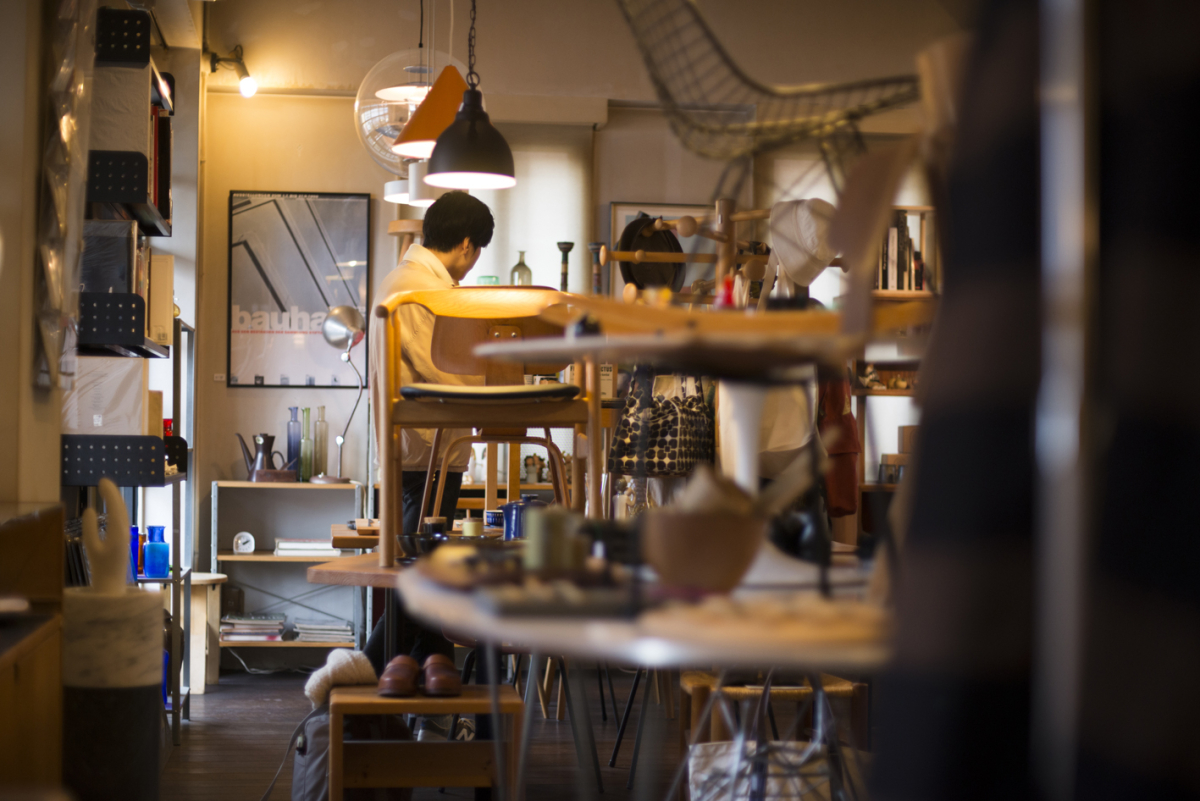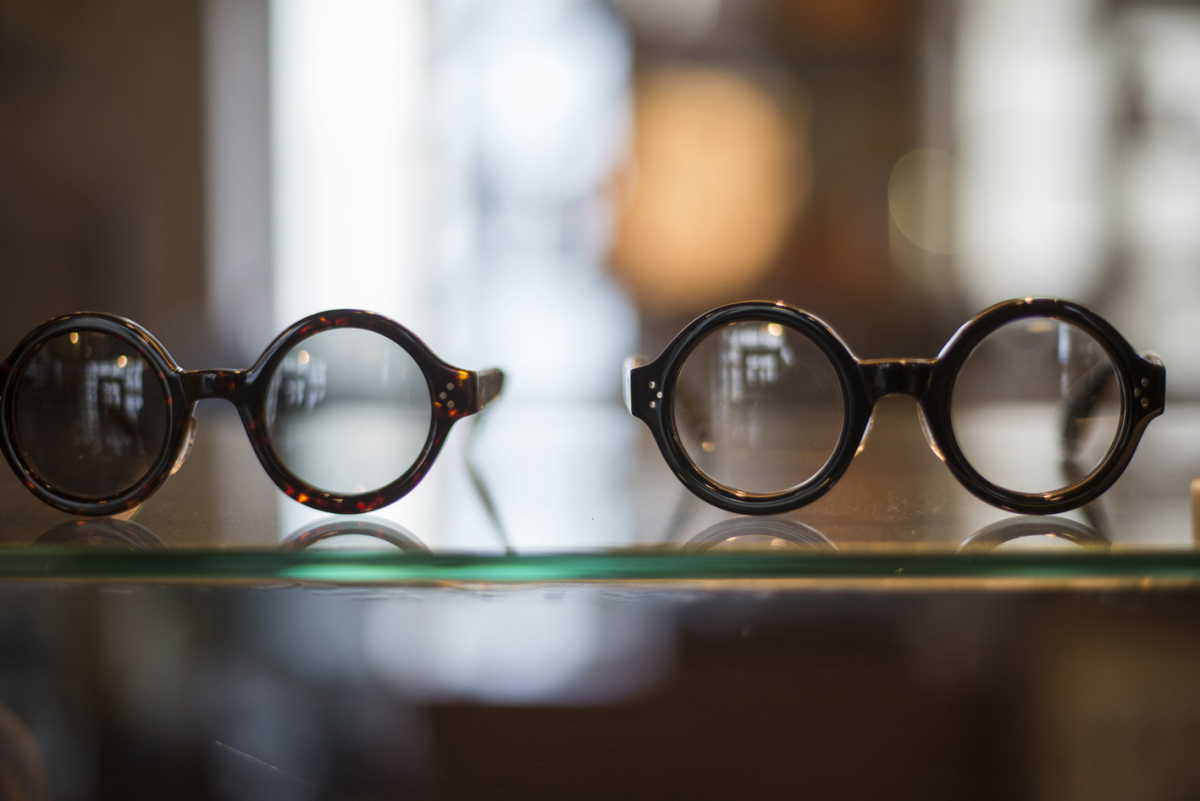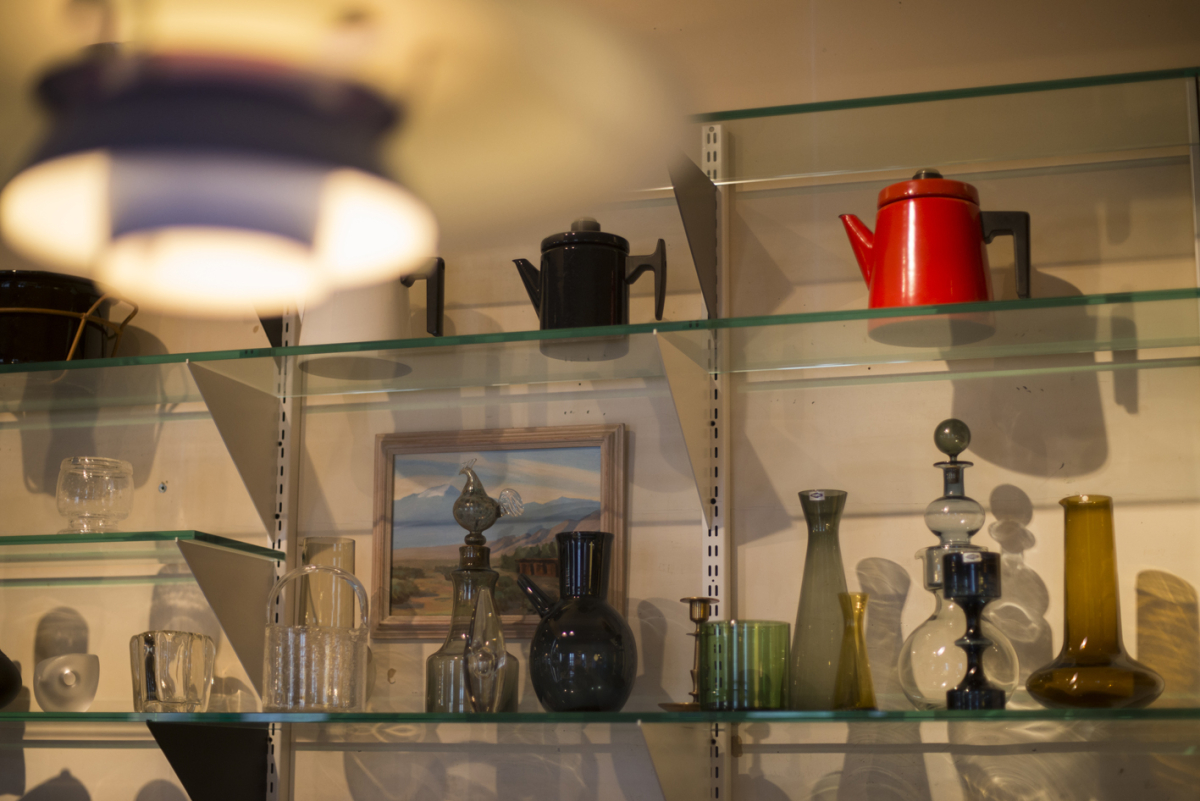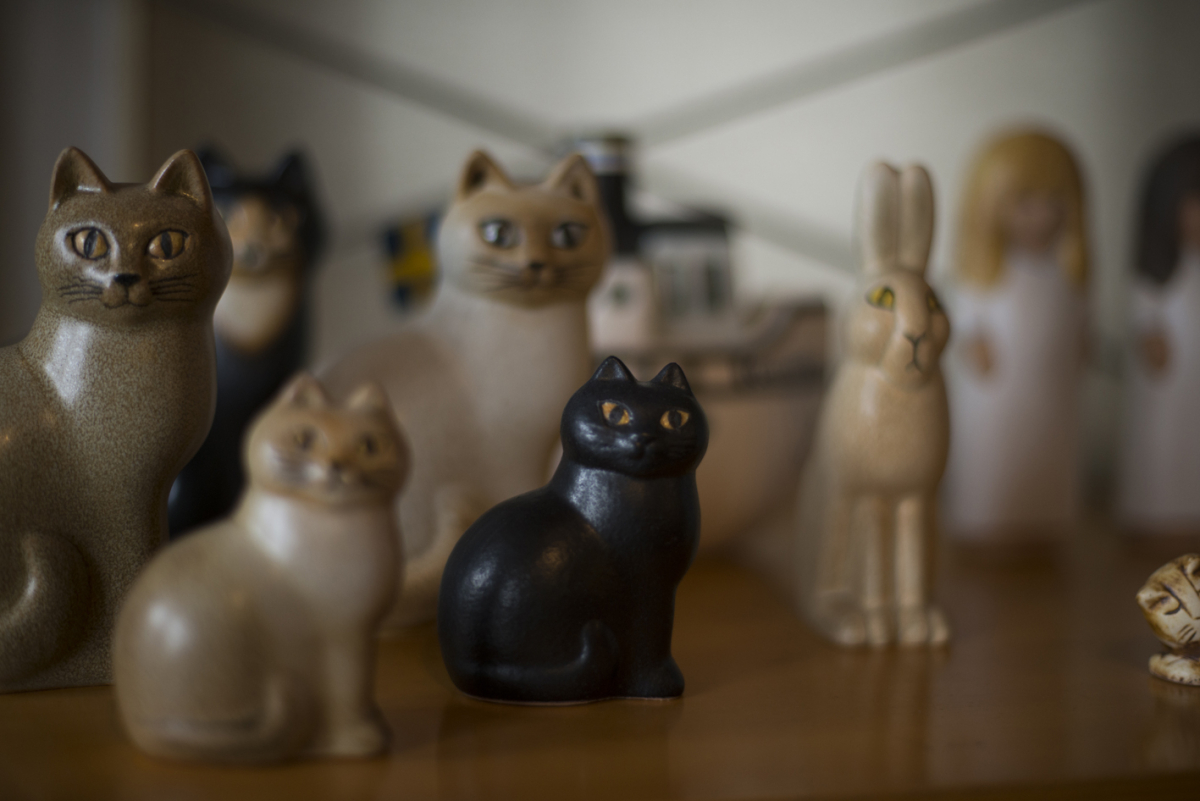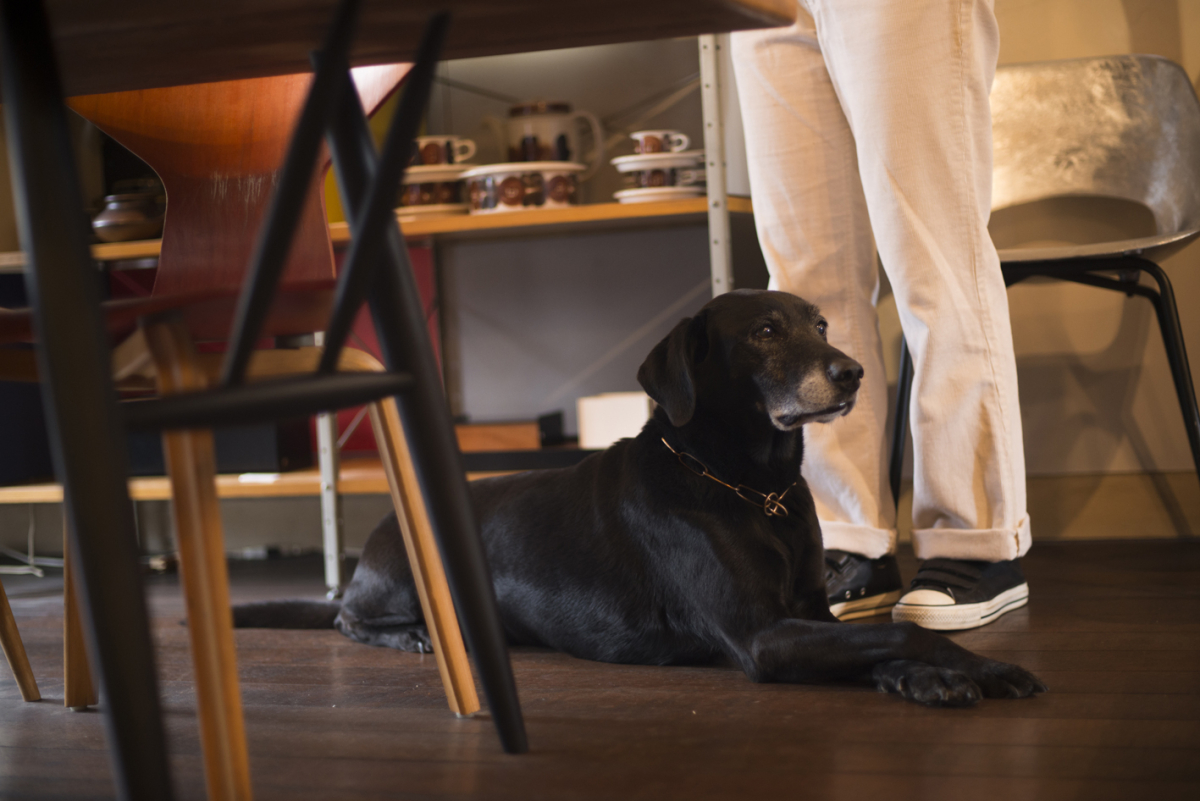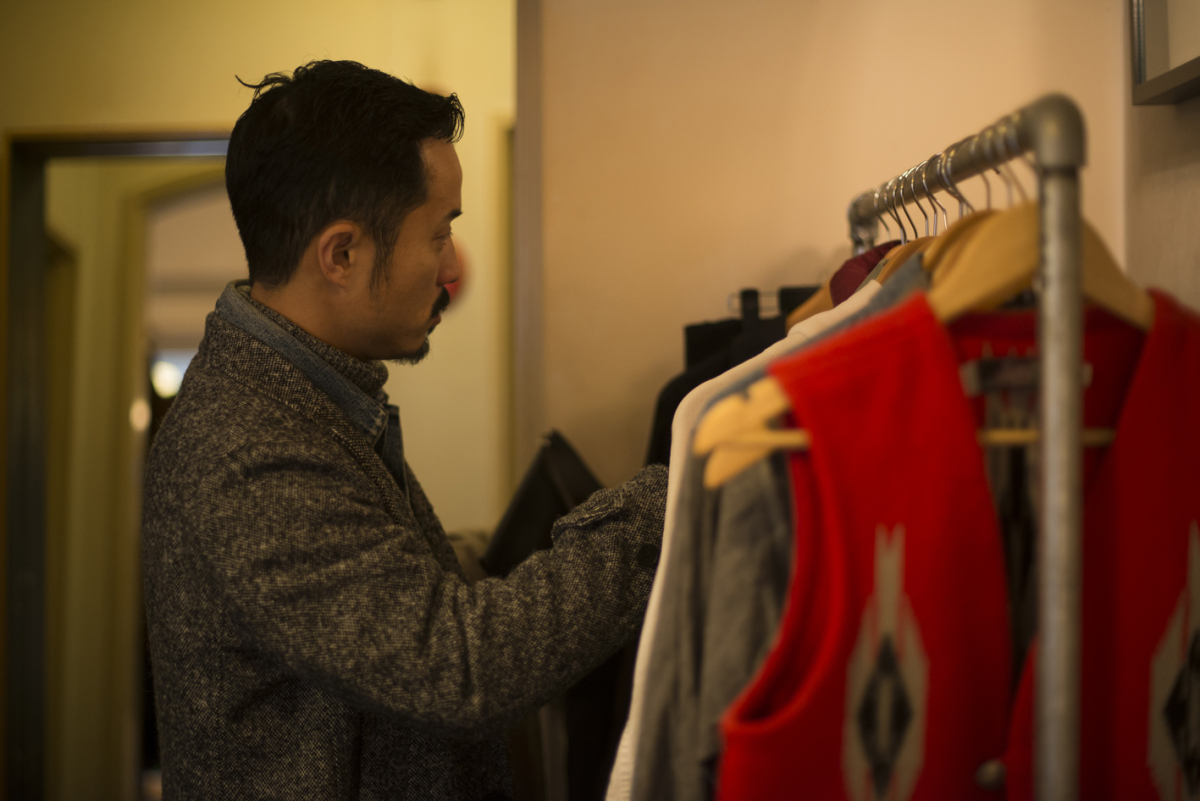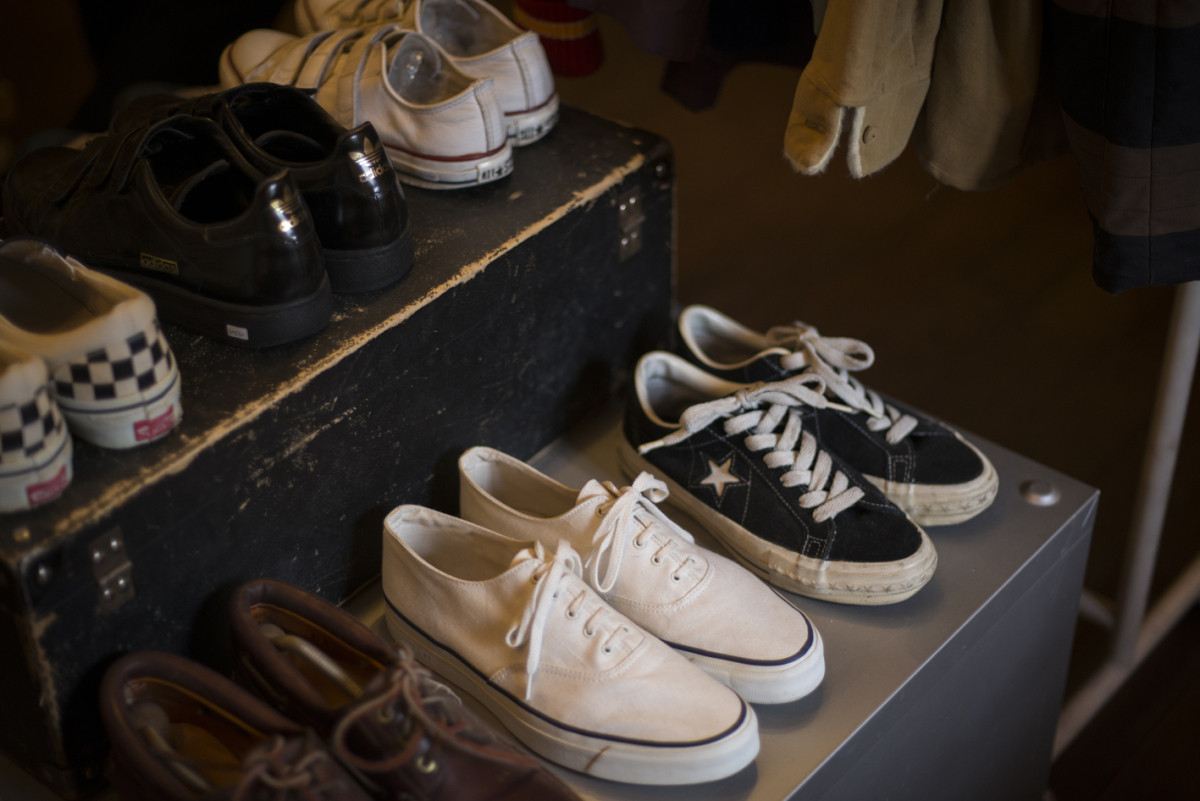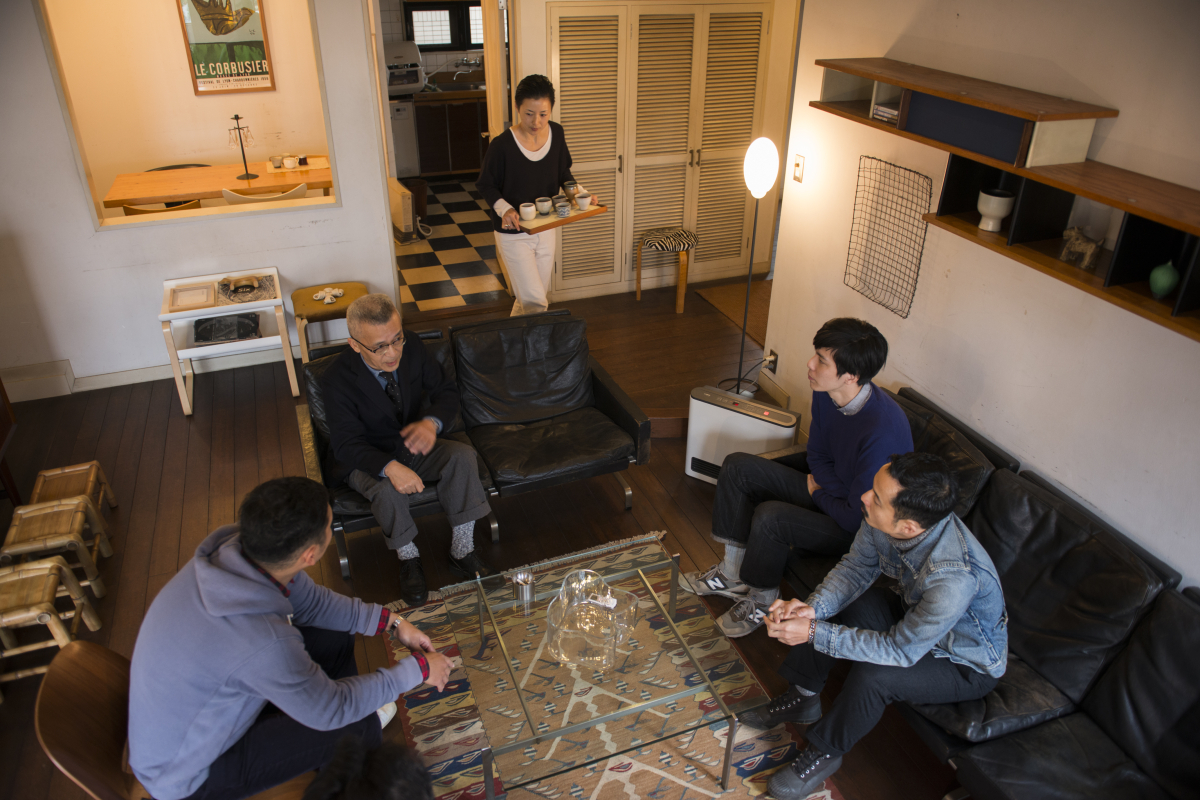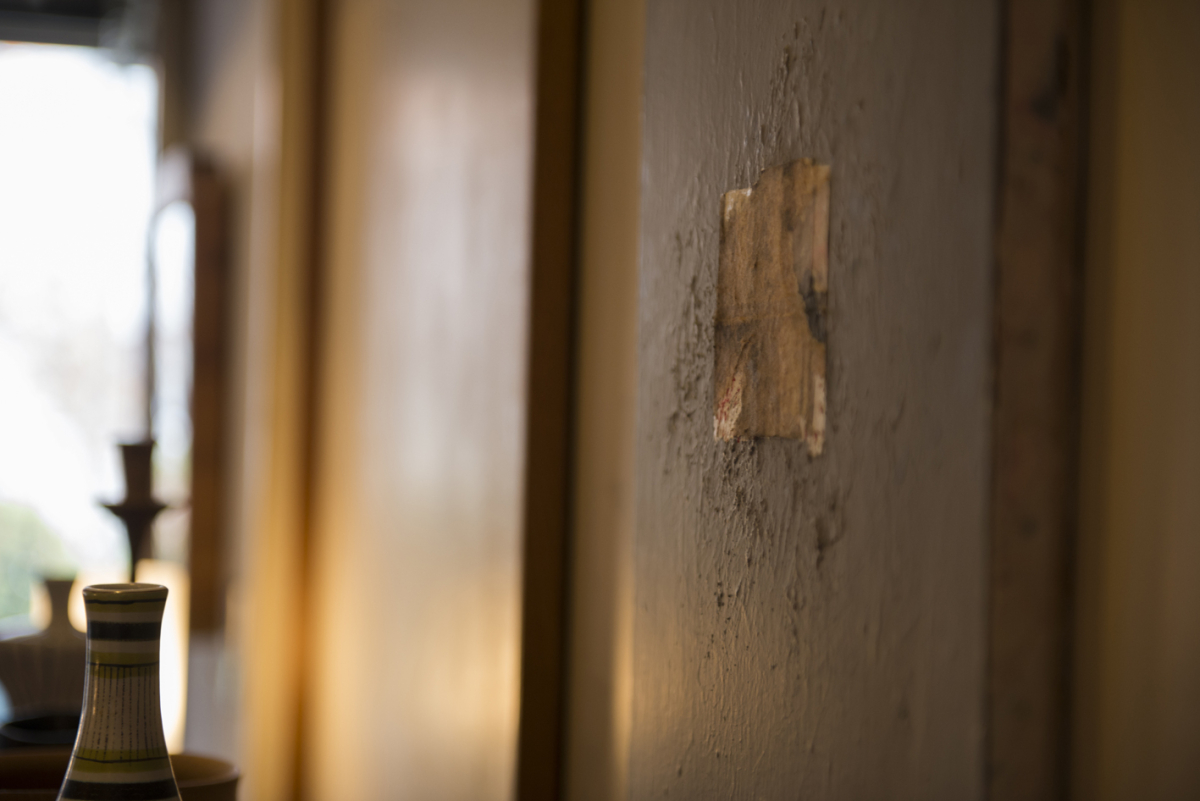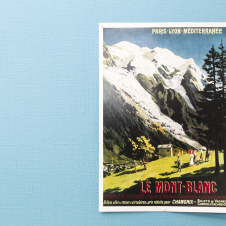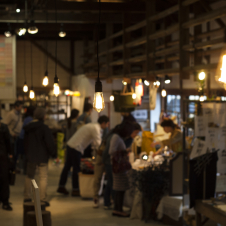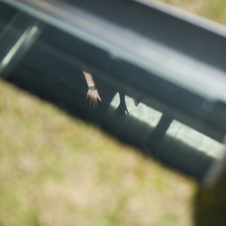Life is Journey
世界を旅する四本の脚
Words by Kenji Jinnouchi, Photographs by Hiroshi Mizusaki ,Edit by Masafumi Tada
Organ, which is an interior design shop located near Nishitetsu Ohashi station, Fukuoka since 1998, has been loved by those around Japan, who have a passion for interior design. While listening to the lovely music and browsing in its cozy atmosphere, you can see great selections of designer’s furniture, daily use products, clothes and some ethnic goods all which are picked by the owners, Mitsutoshi Takesue and his wife, Tomoko, from all around the world.
Futatsumata, Fujito and Misako visited the couple’s home & shop for the interview and they shared the story of how and why they had started their business and what makes them keep going on journeys overseas to buy products.
C: When did you start this shop?
M.T: I think it was in 1998 after I left the music industry. In the beginning, I was just selling some records and soon after, I started carrying furniture, other household goods that were my cup of tea at this shop, usually on weekends. Most of the customers at the time were my friends and l wasn’t so serious about this business.
T.T: The next year, from 1999, I started helping him.
Futatsumata: Has it had the same layout for 30 years?
M.T: Yes. It hasn’t changed at all. When I decided to design this building, I had an idea that I wanted to live here as it is similar to living in a loft apartment in New York, where they wear their shoes indoors. I completed a rough design of my building looking at some examples. The builders had had some experiences constructing western style dwellings where people could go in with their shoes on but they had to make sure with me if it was alright with the construction according to my designing plans many times while they were working on them. I guess they thought it was so unusual. The fourth floor, which is the store space, used to be my private room, but there haven’t been any added changes or renovations since then. Looking back, I think I did too much designing and feel regret for some parts, however, I love the stairs connecting the shop and our private spaces. I chose my favorite color, yellow green for the handrails instead of white or black, which people usually pick. I’m glad that this color worked very well. This handrail gives me some impression of designs of Le Corbusier now, but as a matter of fact, I didn’t even know of him when I designed it.
Fujito: It’s eye-catching when we come down the stairs to the living room.
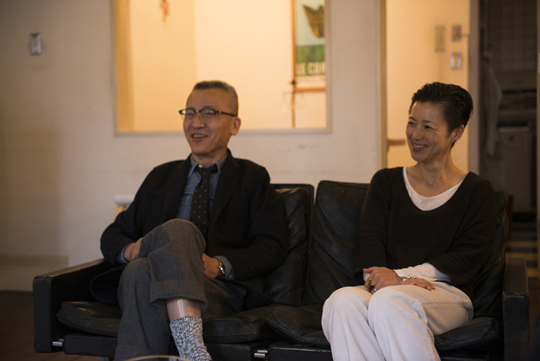
M.T: Around the time I started my shop, I saw an article featuring the work of designers Charles and Ray Eames, by Hitoshi Okamoto on BRUTUS, and it reminded me that I liked their chairs and had liked them ever since I was a young man. At the same time, my friend, Fukuda, who was a buyer of TICRO MARKET told me, “I saw many of their chairs stacked at some shop in the United States and the price was only $20 each.” Soon after, I flew to Chicago to look for the shop because Herman Miller, Inc., who took over the production of the furniture designed by the Eameses, is located near there and I thought it must be near that location. I could purchase the chairs I wished and bring them back home to sell at my shop.
Fujito: Speaking of the year of 1998, I was young and just graduated from university. I remember the mixed cultures of the 90’s fashion, furniture designs, and music was very thrilling. At the time, I came across clothes made from Alexander Girard’s textile and then I found out he was one of the colleagues of Charles Eames.
Futatsumata: Even though I didn’t recognize that some chairs at Kagoshima airport were of the Eames design when I was a high school student, I remember I liked the simplicity of design. I finally figured out whose work it was when I actually started seeing famous designs of architecture and furniture in person, which was around when I graduated university.
T.T: Yes, that space in Kagoshima is amazing.
Fujito: You bought the same type of chairs a long time ago, and put them in your tiny room at the time.
Futatusmata: Yes. Those came from the army base in Okinawa. I found some of the same in yellow and orange. I spent a lot of money on those.
M.T: When I saw some Eames chairs in a magazine, I was familiar with the plastic chair and remembered I liked it. Probably, I had seen his designs or similar designs around my neighborhood, at platforms of Nishitetsu train stations or some public spaces in town, even though I didn’t recognize them as such at the time.
Misako: How old were you when you designed the building?
M.T: I was 30. Prior to that, I was a musician in a band.
Fujito: 30…it would have been way too early for me to design a building.
T.T: You started your own business before 30, didn’t you?
Fujito: Right. I was 28. Futatsumata started his own business earlier than mine.
Futatsumata: In fact, I have never worked for a company. I started product designing of my own, such as cube wooden electrical sockets, when I was in university. After my graduation, I just brought these products to E&Y and IDEE by myself.
T.T: I know! I used to work at E&Y and it had been there already before I arrived there. How ambitious you were at the age of 22 to be selling your products to some famous companies! You had guts.
Futatsumata: Actually, I was just young and didn’t realize what I was actually doing. As a matter of fact, I couldn’t make a living by selling my products at the time.

Misako: You were working at a record shop before you started your shop?
M.T: Yes. At TOWAR RECORD KBC in the building called AREA DUEX.
Fujito: AREA DUEX! Yeah, I remember that!
M.T: That was an innovative building at the time. The ground floor was a grocery store and an Apple store was located on one of the floors. TOWER RECORD KBC carried a lot of import records from overseas unlike other record shops in Fukuoka. I was in charge of buying there and liked New Wave bands like Talking Heads. I found that music is the art of design by sound because of this experience.

C: Did the two of you usually go on buying trips together?
T.T: Yes. We are a good team and perform respective roles.
C: We heard that bamboo goods from Taiwan were selected by Tomoko. Have there been differences of opinion regarding purchasing?
M.T: No. We rarely have conflict. Each of us have a different shopping pace. She spends more time looking and is very careful to find good things that I sometimes don’t notice during shopping.
T.T: My main keyword for shopping used to be “Design”, but now “Craft” seems more appropriate.
I have started choosing things that reflect these two keywords.
M.T: I think this is because of our experience in Sri Lanka in 2012. We visited Geoffrey Bawa’s studio since we knew we actually could stay there. We enjoyed some designer’s furniture like the Eames with the Sri Lanka’s ethnic furnishings in the room. The mixture of the arts gave us a fresh impression. I also loved some Asian products from Indonesia or Malaysia before I started my business. This experience reminded me of what I really need in my life.
Misako: That episode sounds kind of surprising because I thought you only liked mid-century furniture, or northern European furniture.
M.T: Maybe those countries also have similar mythological stories to Asian countries and I think they share some cultural elements as well. That’s why I am attracted by both Asian and northern European products.
T.T: Right. I sometimes find some similarities between cultures, too. I once bought a bangle in Chiang Mai, Thailand, and its design was very similar to a Native American bangle, that was just twisted metal. I have been expanding my interests since my favorite designers like Eames and Alexander Girard liked Katina dolls. It surprised me a lot because I didn’t realize these designers had received some inspirations from these ethnical products! Since then, when I find the titles about African textiles on their bookshelves in the pictures of magazines, I like to check them out.
M.T: I don’t think: Primitive=Old, Modern=Now. These definitions don’t oppose each other.
In my opinion, the sense of Modern lasts forever.
Fujito: I am curious about idea sources from my favorite people too, especially as a fashion designer. I feel like I am restructuring ideas with my inspiration from fashion in the past etc. For example, I just saw some of your old clothes at your shop, and sometimes I come across fresh ideas from these things. I love checking bookshelves or closets of people who I think are awesome. Your favorite items are displayed here all over. Your whole store seems like your closet.
T.T: I know what you mean.
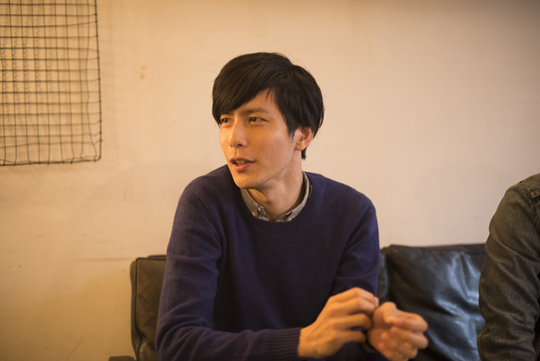
Misako: Speaking of idea sources, have you heard of the virtual community called Open Source? We can share our original items or its idea sources.
M.T: Wow, sharing them on the internet?
Misako: Yes. People from all over the world can access it through the internet. Just like research papers. More brilliant people give larger contributions.
M.T: Feel free to use!
Misako: Basically, those smart people aim to make their business field better and better for the future.
T.T: I heard that Misako holds some events for one of his activities regarding magazines, called 10zine overseas and I found it very unique. Fukuoka is not a famous city in the world but I think there are more people trying to run their own business in Fukuoka, than in any other cities in Japan.
Fujito: I think our advantage is just following our interests. Even though our business is small, if the idea is simply terrific, there is a good chance of gaining somebody’s interest, somewhere in the world.
M.T: Exactly. Recently, people like to use the word “Global”, but I think it would be faster to connect to someone, for example in Malaysia, with whom we can have the same interests by devoting our heart into our own activities in this local city of Fukuoka. In my opinion, it would be the real meaning of “Global”, don’t you think?
Misako: I feel the same sometimes. I have conducted my 10zine events in Taiwan and some local friends kindly helped us there. I wonder why and I feel shamed through our activity: there are still many people who never show any respect to people in other countries or cultural backgrounds other than their own. It’s nonsense.
T.T: Especially for me, I have started going to some Asian countries quite often and I love all people and cultures in Asia and being a part of it. So, I feel frustrated seeing personal quarrels between some Asians on the internet. I wish we could have the opportunity to meet each other as friends.
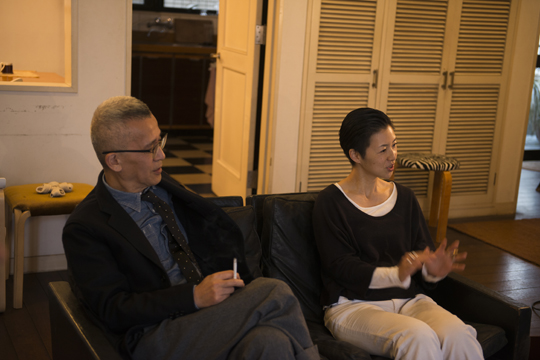
C: To wrap up, can I ask what your future goals are?
M.T: Well, I want to keep travelling to buy things in the world. I’m getting old, of course but, I would like to keep myself motivated and not to lose interests in things overseas.
After that, finally, I think I don’t need to worry about running my shop and I can leave everything to the next owner, my wife. That’s what I hear from one of my buddies. (Laugh)
Mitsutoshi Takesue
Organ co-owner
He was born in Hakata in 1949. In the seventies, he played with the band “Budobatake” and lived life day by day in Tokyo. In the eighties, he came back to Fukuoka and worked for Tower Records KBC. He released some records aiming at “furniture’s music” together with the band Flat Face from the label MIDI. After the bursting of the bubble to the economy, he felt he had nothing but his home, and he started the interior shop “Organ” inside his house. Together with designers based in Fukuoka, he launched ENOUGH, ZINE, and other publications, promoting “lifestyle with shoes on”.
organ-online.com
Tomoko Takesue
The other co-owner of Organ
She was born in Yamaguchi Pref. in 1974. After graduating college, she worked in some furniture shops and movie theaters in order to follow her interests. Then, she started working at Organ in 1999. Her motto is traveling in Japan and abroad to find things that attract people, designed by the famous & the non-famous. Recently she’s spending her efforts introducing jewelry brands like “KO” and “Monica Castiglioni”.
Taro Misako
Graphic designer, Web director
He was born in Kitakyushu in 1980. He started his own business as a graphic designer and web director in 2008. He personally organizes his web magazine, taromagazine, and zine community, 10zine, also the portal website, Prefab, as well as working as one of the designers at Central.
taromag.misaquo.org

